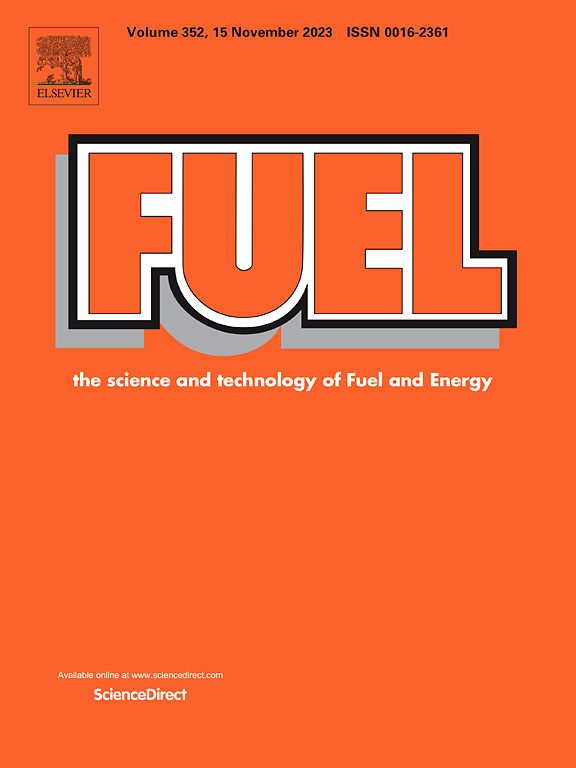热再生沥青混合料界面损伤机制:考虑初沥青与老化沥青混合水平的分子动力学研究
IF 7.5
1区 工程技术
Q2 ENERGY & FUELS
引用次数: 0
摘要
热再生沥青混合料的使用对于减少废沥青对环境的污染和降低原始材料的提取能耗具有关键作用,是促进路面工程可持续发展的重要策略。传统的热回收工艺通常会导致原始沥青和老化沥青之间的不完全混合,导致多个潜在界面的复杂界面破坏机制。目前的研究尚未完全阐明这些破坏行为,这极大地限制了高再生沥青路面(RAP)含量混合物的实际实施。本研究结合分子动力学(MD)模拟和实验室性能试验,研究了不同掺合水平下热再生沥青混合料复杂界面的破坏机制。建立了不同老化水平沥青和不同掺合水平再生沥青的分子模型。这些模型,以及涉及酸性(石英)和碱性(方解石)聚集体的界面系统,被用来分析粘附和凝聚能的变化。实验结果表明,老化沥青- rap骨料界面的粘附强度随着沥青老化水平的提高而显著增加,特别是当使用方解石等碱性骨料时,由于离子和静电相互作用增强。提高旧沥青与原沥青的掺合水平,既能提高沥青与骨料的粘结性,又能提高沥青与沥青的粘结性;然而,当老化沥青经历严重氧化时,这种改善更为明显。混合料内部的破坏位置随骨料岩性和掺合水平的不同而不同:在碱性骨料体系中,界面破坏主要发生在老化沥青和原生沥青之间,而在酸性骨料体系中,随着掺合水平的增加,破坏从再生沥青-老化沥青界面转移到再生沥青-原生骨料界面。室内试验观测到的水分稳定性变化趋势与MD模拟预测的趋势非常吻合,证实了模拟结果的可靠性。这些发现为性能优化策略提供了基础:对于碱性骨料,提高混合水平被证明可以有效改善混合性能,而对于酸性骨料,建议加入抗剥落剂或使用更兼容的骨料类型以确保耐久性。本文章由计算机程序翻译,如有差异,请以英文原文为准。

Interfacial damage mechanisms in hot-recycled asphalt mixtures: A molecular dynamics study considering the blending level between virgin and aged asphalt
The use of hot-recycled asphalt mixtures plays a key role in minimizing environmental pollution caused by waste asphalt and reducing energy consumption in the extraction of virgin materials, making it an essential strategy for promoting sustainable development in pavement engineering. Conventional hot recycling processes often yield incomplete blending between virgin and aged asphalt, leading to complex interfacial failure mechanisms at multiple potential interfaces. Current research has yet to fully elucidate these failure behaviors, significantly constraining the practical implementation of high-reclaimed asphalt pavement (RAP)-content mixtures. This study investigated the failure mechanisms of complex interfaces in hot-recycled asphalt mixtures under varying blending levels, combining molecular dynamics (MD) simulations with laboratory performance tests. Molecular models of asphalt with different aging levels and recycled asphalt with various blending levels were constructed. These models, along with interfacial systems involving acidic (quartz) and alkaline (calcite) aggregates, were used to analyze the variations in adhesion and cohesion energies. Experimental results showed that the adhesion strength at the aged asphalt-RAP aggregate interface increased significantly with higher aging levels of asphalt, especially when alkaline aggregates such as calcite were used, due to enhanced ionic and electrostatic interactions. Increasing the blending level between aged and virgin asphalt improved both the asphalt-aggregate adhesion and the asphalt-asphalt cohesion; however, this improvement was more pronounced when the aged asphalt had undergone severe oxidation. The failure location within the mixtures varied with both aggregate lithology and blending levels: in alkaline aggregate systems, interfacial failure primarily occurred between aged and virgin asphalt, while in acidic aggregate systems, the failure shifted from the recycled asphalt-aged asphalt interface to the recycled asphalt-virgin aggregate interface as the blending level increased. The evolution of moisture stability observed in laboratory tests closely matched the trends predicted by MD simulations, confirming the reliability of the simulation results. These findings provided the basis for performance optimization strategies: for alkaline aggregates, enhancing the blending level proved effective in improving mixture performance, while for acidic aggregates, the incorporation of anti-stripping agents or the use of more compatible aggregate types was recommended to ensure durability.
求助全文
通过发布文献求助,成功后即可免费获取论文全文。
去求助
来源期刊

Fuel
工程技术-工程:化工
CiteScore
12.80
自引率
20.30%
发文量
3506
审稿时长
64 days
期刊介绍:
The exploration of energy sources remains a critical matter of study. For the past nine decades, fuel has consistently held the forefront in primary research efforts within the field of energy science. This area of investigation encompasses a wide range of subjects, with a particular emphasis on emerging concerns like environmental factors and pollution.
 求助内容:
求助内容: 应助结果提醒方式:
应助结果提醒方式:


